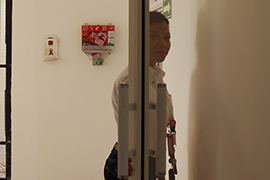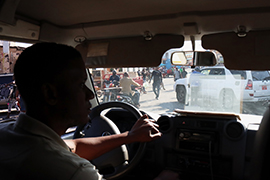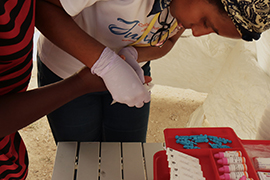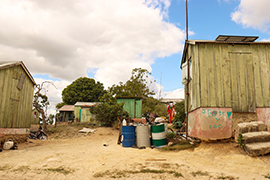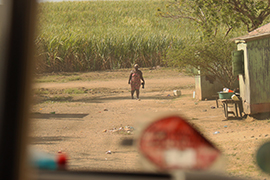- Slug: BC-CNS-HIV Dominican. Audio Essay,200 words.
- 7 photos, 3 audio stories linked below (photo thumbnails, captions below)
By Albert Serna Jr.
Cronkite Borderlands Initiative
SANTO DOMINGO, Dominican Republic – AIDS Healthcare Foundation works to provide treatment for people living in the Dominican Republic. But for Haitian migrants, access to care can be difficult.
Episode 1: HIV care and treatment in the Dominican Republic
Access to care and treatment for HIV is not always difficult to get – the AIDS Healthcare Foundation provides treatment to anyone who needs it. But resources for the Dominican arm of the agency are not always plentiful and a small team works to provide care across the country.
Episode 2: Resources for people living with HIV in Haiti may be difficult to come by
In what has been described as one of the “poorest countries in the Western Hemisphere” by the Council on Foreign Relations, there are resources readily available for people living with HIV. Even so, what people ask for and need isn’t always available to them due to lack of funding and lack of communication between different agencies.
Episode 3: HIV testing and treatment for Haitian migrants in Dominican bateyes
In some of the country’s poorest communities, Light a Candle Foundation dispatches mobile clinics to test for and treat HIV. Community buy-in is important, but a stigma and lack of understanding about the spread of the virus can keep the community from testing.
^__=
Massiel Ruiz, the country program manager for AIDS Healthcare Foundation Dominican Republic, gives a tour of the AHF facility on March 8, 2023, in Santo Domingo, Dominican Republic. Ruiz oversees AHF programs for the Dominican Republic and recently opened the Santo Domingo clinic. (Photo by Albert Serna Jr./Cronkite Borderlands Project)
Stanley Payoute, a doctor with AIDS Healthcare Foundation Haiti, drives across the border into the Dominican Republic to meet with reporters on March 5, 2023, in Dajabon, Dominican Republic. Payoute drove with two patients and a nurse from his clinic in Cap-Haitien, Haiti. (Photo by Albert Serna Jr./Cronkite Borderlands Project)
Health care worker and HIV tester, Katherine, takes a blood sample from a patient to test for the virus on March 6, 2023, in La Romana, Dominican Republic. Katherine tested 29 residents of the Batey La Gina, none of whom tested positive for HIV. (Photo by Albert Serna Jr./Cronkite Borderlands Project)
A child looks through barbed wire as her family waits to reach the mobile clinic at Batey La Gina on March 6, 2023, in La Romana, Dominican Republic. Light a Candle Foundation works to bring mobile clinics to the Dominican bateyes where people can receive basic medical treatment and testing for HIV. (Photo by Albert Serna Jr./Cronkite News)
A batey in the middle of a sugarcane plantation on March 6, 2023, in La Roman, Dominican Republic. Batey La Gina is a small community of sugar plantation workers and their families with no running water and little electricity. (Photo by Albert Serna Jr./Cronkite News)
A woman stands in the middle of the road waiting for the mobile clinic to arrive in Batey La Gina on March 6, 2023, in La Romana, Dominican Republic. Bateyes are small villages where plantation workers live, most of whom are Haitian migrants. (Photo by Albert Serna Jr./Cronkite News)
A Haitian national looks through the border fence from Haiti on the bridge between the two countries on March 4, 2023, in Dajabon, Dominican Republic. In the evening, the gate between the two countries closes and people are only permitted to leave the Dominican Republic. (Photo by Albert Serna Jr./Cronkite News)
